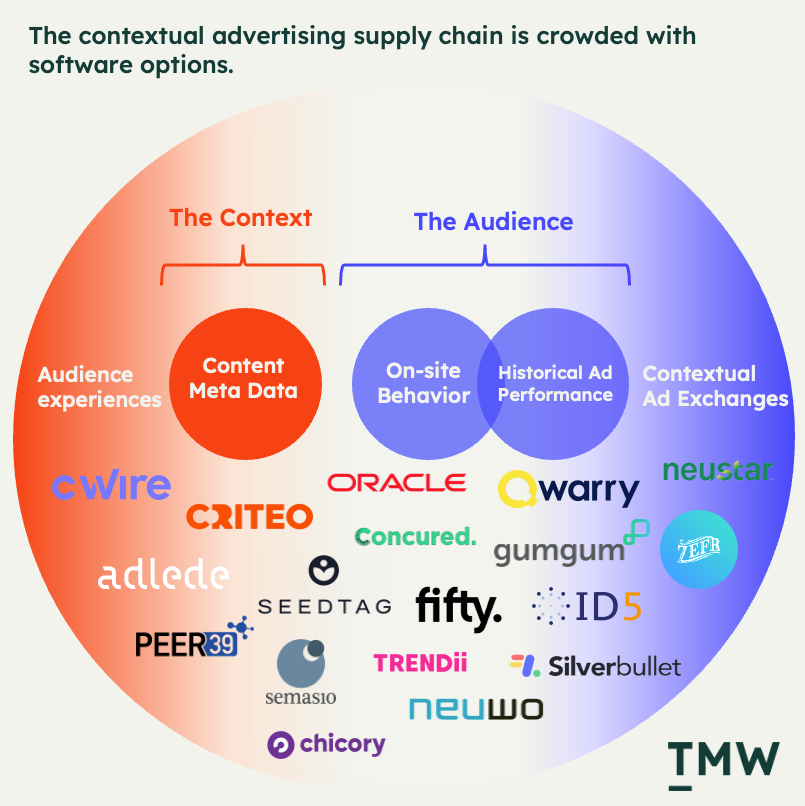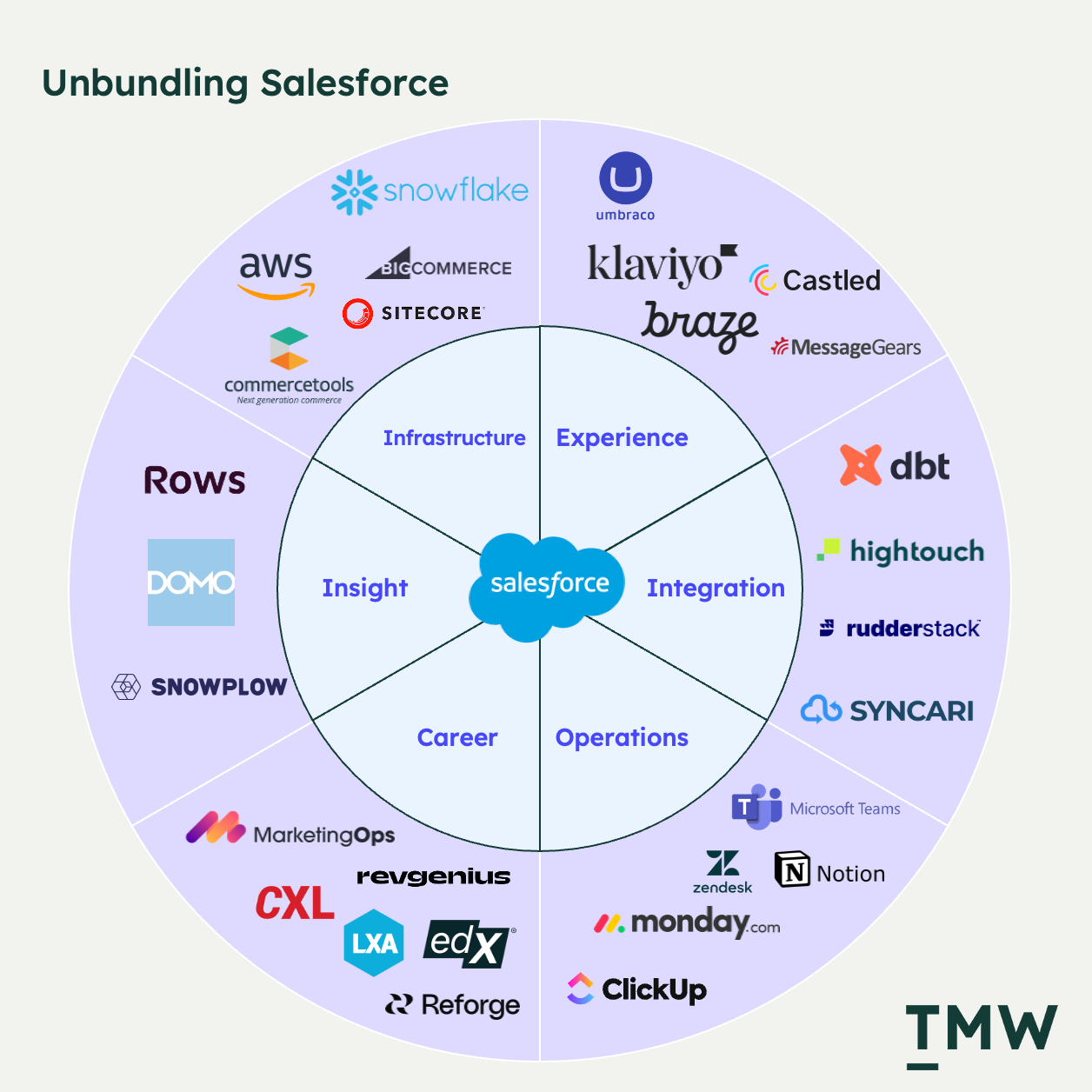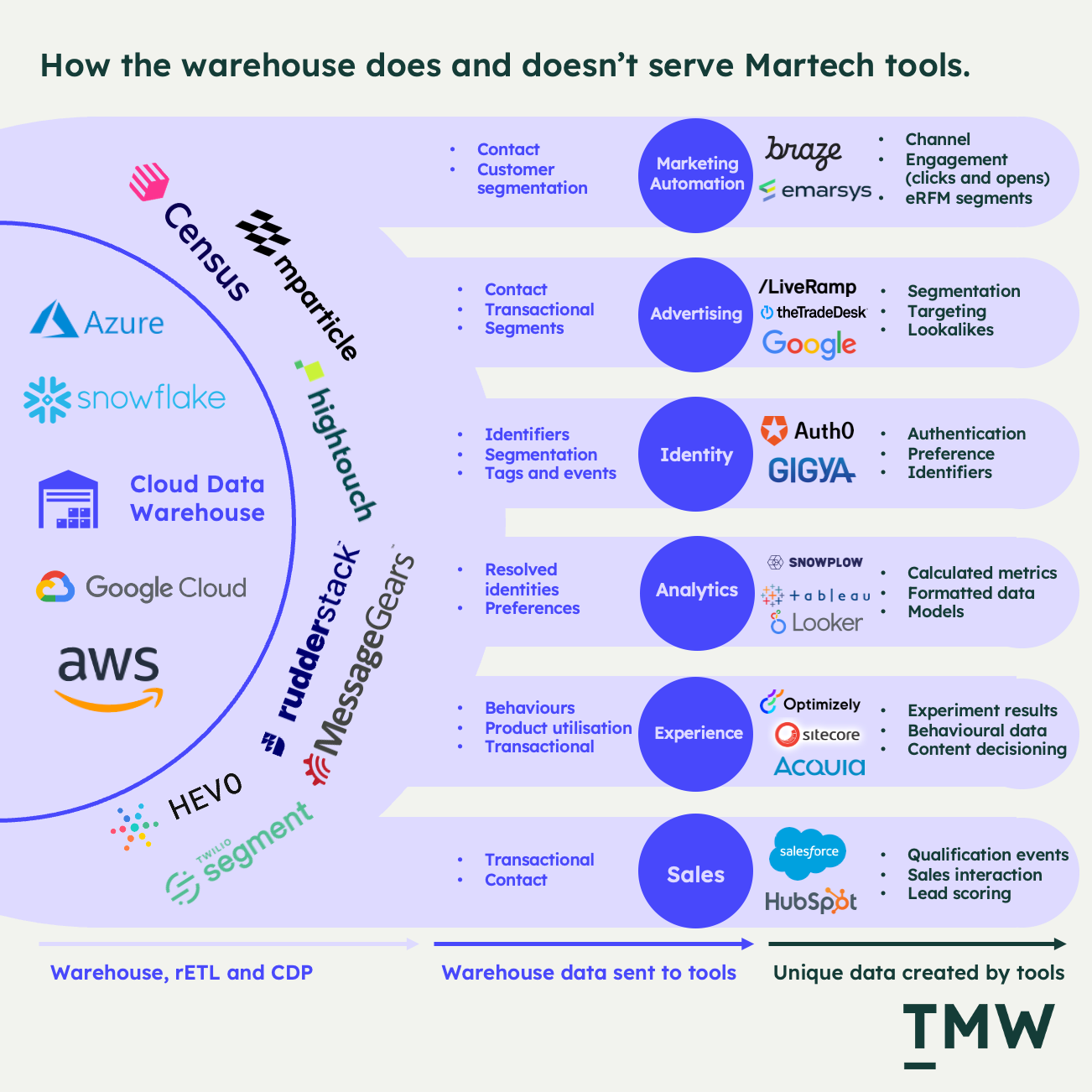TMW Q1 2023 | The quarter that was
Welcome to The Martech Weekly, where every week I review some of the most interesting ideas, research, and latest news. I look to where the industry is going and what you should be paying attention to.
👋 Get TMW every Sunday
TMW is the fastest and easiest way to stay ahead of the Martech industry. Sign up to get the full version delivered every Sunday for this and every TMW, along with an invite to the TMW community. Learn more here.
Some news: Big Martech is back for Season 2! This time around Scott Brinker and I are unpacking some of the major trends in Martech three episodes at a time. The goal is to bring a helpful perspective to how the industry is changing in real-time. You can now check out our first series focuses on the end of third-party cookies. Link
TMW Q1 2023 | The quarter that was
This past quarter has perhaps been the most chaotic period in Martech I’ve seen in a long while – and I lived through the Metaverse wars of 2021. For this newsletter, I look back on the marketing technology industry to bring you the top three most-read Sunday essays over Q1, with a synopsis of what it was about and a short update on how my thinking has changed since I wrote them. I also included a few unlocked TMW PRO charts from the top three selected essays.
What were people reading in Q1? Let’s find out.
🥇 First Place: TMW #114 | The contextual renaissance
The contextual renaissance asks the question: Is it time for the return of a very old way of doing online advertising? The deprecation of third-party cookies is causing all kinds of second-order effects. One of those is the return of contextual advertising as AI capabilities become more advanced across the contextual advertising supply chain, while marketers look to new channels and methods to improve ad relevance that maintains user privacy.
A quote
“Clearly, the way internet advertising works today is struggling along under its own weight – an old technology in a period when the internet was dumber. That’s why I’m excited about contextual advertising as it does several things that third-party cookies couldn’t do: it creates incentives for data analytics maturity from a wider variety of companies that run contextual ads; it helps to keep content and services free for users; it gets outcomes for publishers; and it goes much further in ensuring that people’s privacy is indeed kept private.”
A chart

A reflection
There’s still no clear winner emerging out of third-party cookie deprecation. A new report reflects this, suggesting that 75% of marketers are still relying on third-party cookies. But increasingly, data shows that contextual advertising is growing in value and prominence as a viable alternative. One of those areas is brand safety, where GumGum – one of the leading independent companies – recently announced tools to be the first 100% brand-safe advertising exchange. There’s a lot of promise here, but we might need to wait a little longer to figure out exactly how AI-powered tools can improve ad relevancy without needing to track users.
🥈 Second Place: TMW #111 | Unbundling Salesforce
This was an essay I’d been waiting to write for a couple of years now. There has always been a disconnect for me between the experience of customers using Salesforce, its dominance in the CRM market, and its aspirational marketing. Like many other companies in the tech downturn, Salesforce saw a significant wipe-off of shareholder value, along with a 10% reduction in its workforce and activist investors joining its board, and as such, I got my chance to really analyze this mind-boggling company in detail. What I found was a new generation of founders taking slices away from Salesforce’s core sales and marketing software proposition. Salesforce is more than a CRM business: it’s a career business, but change is coming for the big blue behemoth.
A quote
“A shift to a more modular approach to Martech can unlock a significant amount of talent in the industry. But also create new problems. Salesforce created a mental map for how we think about customer relationship management, and it’s still their bread and butter even today.
But in my view, unbundling Salesforce would unleash a whole new wave of enterprise innovation in how brands interact with their customers and build the necessary data and operational infrastructure to support it. In 2000 the future was SaaS, but in 2023, the future is flexible.”
A chart

A reflection
Since writing this piece, Salesforce’s stock has rebounded after a wave of layoffs that shored up investor confidence. The company has recently announced its generative AI product and is now firmly riding the wave of AI hype, sparking further criticism. There was a short moment where Salesforce was on uneven ground for the first time in years, but now revenue is surging, increasing by 16% in the first quarter of 2023, and investor confidence is returning. Benioff the Undefeated continues his reign over the company. Despite the company’s rebound, the greater shift away from the marketing suite monoliths to greater composability in the Martech stack made of best-of-breed solutions is the trend that will continue to eat away at the company, regardless of its executives' uncanny ability to woo Wall Street.
🥉 Third Place: TMW #115 | A home for marketing data
There was a question that was eating away at me as I was tracking the growing trend of companies building data warehouse native marketing technologies. The question was this: do marketers actually want to embrace the cloud data warehouse? To help answer this I went out and spoke with a series of senior marketing technologists. What I found was that marketers want to embrace the data warehouse to get faster and more flexible access to customer data, but there’s so much data created by various marketing technologies like CRMs, marketing automation platforms and more that make it challenging to see the data warehouse as the real hub of all marketing data.
A quote
“Clearly, there’s a language and education challenge to overcome if marketers are to embrace the data warehouse for Martech. But there is something shifting here; marketers don’t need to learn SQL to understand the possibilities of using the warehouse as a rich source of customer data, but they will need to learn how to make small talk with an engineer on their hundredth data query request.
So the answer to the question is that yes, it seems as though marketers are increasingly wanting to understand the data warehouse, but the technology to make it work for marketing is still nascent, ways of collaborating between data and marketing are underdeveloped, and there’s so much data that Martech tools create that it represents new challenges altogether.”
A chart

A reflection
CDPs continue to build ETL tools, and more investment is to come. Since writing this piece, Twilio Segment and mParticle, both prominent CDP companies, have launched their own reverse ETL capabilities with a specific view to bringing identity resolution to the data warehouse. This is the obvious gap in data activation products that rely heavily on other platforms to do the identity and enrichment piece before customer data is in a usable state for downstream Martech tools. Regardless, marketers will want to access a deeper layer of data, as first-party data is becoming increasingly important for advertising.
That’s it for our Quarter One review. I do hope you enjoy a restful Easter long weekend. We’ll be back with the regular Sunday essay next week.
Stay Curious,
Make sense of marketing technology.
Sign up now to get TMW delivered to your inbox every Sunday evening plus an invite to the slack community.
Want to share something interesting or be featured in The Martech Weekly? Drop me a line at juan@themartechweekly.com.
